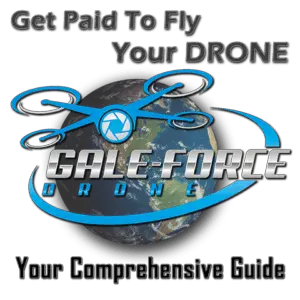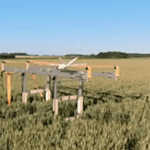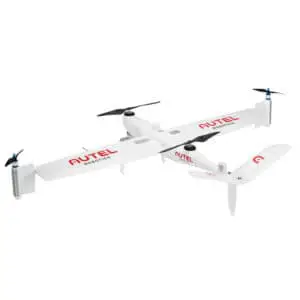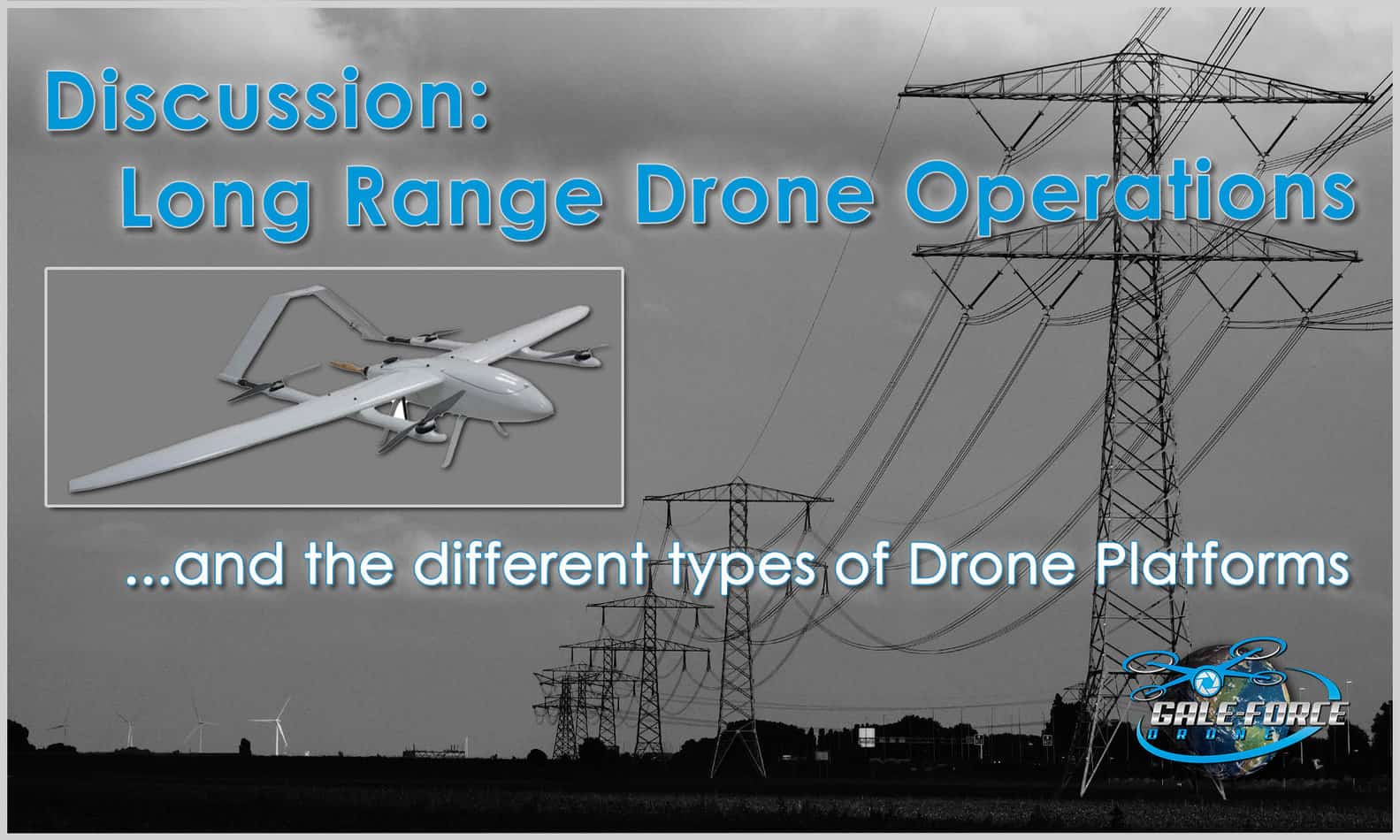
A lot of new drone pilots begin their career by specializing in small jobs: real estate, structural inspection, and event photography are a few of the common jobs for a new drone startup business. Today, we are going to discuss long range drone operations, and expanding to some “next level” drone jobs, particularly those that extend beyond the short-range, VLOS (Visual Line of Sight) use cases. Specifically, we will be discussing BVLOS (Beyond Visual Line of Sight) drone jobs, and the equipment you’ll need to conduct them.
What is VLOS and BVLOS?
What is the difference between VLOS (Visual Line of Sight) and BVLOS (Beyond Visual Line of Sight)? Like most regulating bodies, the FAA doesn’t define a clear boundary: as long as you can visually locate and control your drone with the unaided eyeball, you are operating VLOS. You can even extend your drone’s range by using a Visual Observer with a real-time communication system (such as a two-way radio).
Most small- to medium-sized commercial drones can be seen up to one mile (1.6 kilometers) with the unaided eyeball. So, if you have a Visual Observer about two miles (3.2 kilometers) away, you could theoretically fly VLOS out to three miles (4.8 kilometers)! The distances increase with larger drones.
Three miles might seem long range for a quadcopter drone pilot, but let’s think about this distance in the context of some real-world missions.
- Corridor mapping and inspection missions are useful for roadways, railways, pipelines, and powerlines. These could easily extend beyond 20 miles!
- Distant remote imagery can be used to cover large swaths of land such as forests, farms, and solar fields. These jobs can cover hundreds, or even thousands, of acres!
- Drone Delivery first-mile and middle-mile legs can cover hundreds of miles!
- Military drone pilots might be flying a drone from a different continent!
If you want to expand your drone startup business into these types of missions, you’ll need to rethink how you run your flight operations.
Long Range Drone Platforms
First, let’s look at the different airframe styles, and the range performance they give. Remember, this is a very general comparison to use as a guide only.
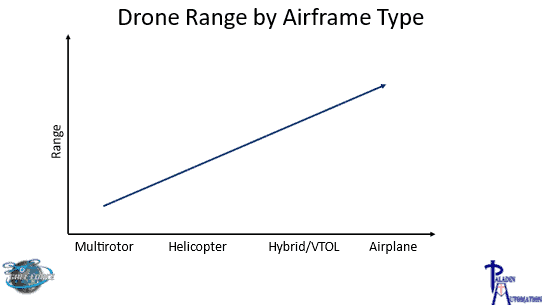
If your long-range drone only needs to fly a few miles, you can probably use a multirotor, small fixed-wing or helicopter style drone. If it needs to fly a medium range, then a fixed-wing, hybrid or VTOL (vertical take-off and landing) aircraft will probably work. If it needs to fly dozens, or even hundreds, of miles, you probably need a pure fixed-wing airplane.
Next, let’s look at the different energy sources. Most new drone pilots use lithium-polymer battery-powered drones for small jobs, but a conventional battery may not give the flight endurance for a long-range drone flight. This is a very general comparison between various power sources.
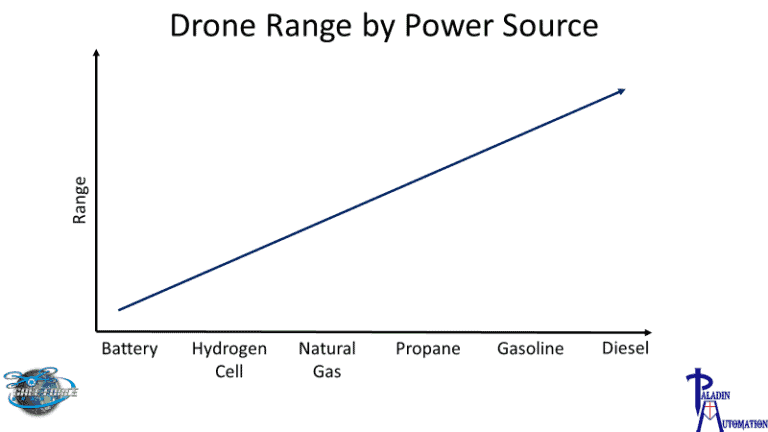
Depending on how long your flight time must be to meet the mission requirements, you may need a combustion engine with aviation gasoline (AVGAS), or a turbine engine with diesel (jet fuel)!
The longest-range drone flights are most commonly conducted with a fixed-wing airplane and carbon-based fuel. This is the standard type of aircraft used in long-range manned aviation. This type of aircraft does not perform well at low altitudes; in fact, most manned aircraft get their best range at high altitude—15,000 ft and above! There is a complex relationship between the high air density at low altitudes (good for the engine) and the low air density at high altitudes (good for the wings) that varies by aircraft, but the general trend is that the best ranges are achieved at high altitudes. So, if you employ this type of aircraft for your drone business, be sure to research its most efficient flight altitude—it will probably be higher than 400 ft.!
There are a few alternative methods to increasing drone endurance and range that we should cover, to see if they might be right for you.
Long Range Drone Types
Daisy-chain. Multiple drones can fly individual segments of a longer route. They might each be inspecting specific portions of a linear feature, or perhaps they are transferring cargo between aircraft at each stop.
 Hybrid (Gas/Electric) Drones. These are generally multi-propeller drones that operate on batteries, while a gas-powered engine and power generator is integrated to continually charge the batteries and thus extending flight times. However, these solutions are complex, heavy, and are still limited to the amount of gas the drone can carry.
Hybrid (Gas/Electric) Drones. These are generally multi-propeller drones that operate on batteries, while a gas-powered engine and power generator is integrated to continually charge the batteries and thus extending flight times. However, these solutions are complex, heavy, and are still limited to the amount of gas the drone can carry.
Once you determine the proper equipment and concept of operations for your long-range drone business, there might still be some regulations to overcome.
- BVLOS waiver. The FAA’s Part 107 Remote Pilot Certification requires VLOS operations but allows for BVLOS operations with a specific waiver. To obtain a written waiver, the drone pilot must present a safety case that considers how he will track the drone’s location and avoid obstacles.
- Altitude waiver. The FAA’s Part 107 Remote Pilot Certification specifies a maximum altitude of 400 ft AGL (above ground level). A long-range drone pilot may want to fly higher than this limit for obstacle avoidance, datalink reception, and aircraft flight efficiency. Once again, the drone pilot will need to obtain a written waiver by presenting a safety case that considers the class of airspace and how he will avoid manned aircraft.
- BVLOS datalink. Most commercial drones use a line-of-sight datalink with a range up to about 2 miles (3 kilometers). To fly beyond this distance while maintaining contact with the drone, a longer range datalink is required. In regions with good 4G/5G coverage, this can be an inexpensive solution to expanding the datalink range. In remote regions that do not have reliable mobile coverage, there are multiple SATCOM (commercial satellite communications) solutions that allow OTH (over-the-horizon) connectivity. Beware that both 4G/5G and SATCOM solutions will probably cost subscription fees.
In Conclusion
If you decide that long-range drone operations are right for your business, you now know some factors to consider. You will have to purchase or build the right equipment capable of covering the distances, and you will have some regulatory waivers to obtain before you can start operating. These are some significant investments, but they will launch your drone startup business well beyond most of your competitors.
How To Get Your FAA Part 107 Pilot Certification
If you are serious about making money with your drone, whether it be Real Estate, Aerial Inspections, etc., then you will need, from the FAA a 14 CFR Part 107 certification.
The best source for your training can be found by clicking on RemotePilot101. Jason Schappert is a pilot and author of 8 best-selling aviation flight training books. While studying and taking tests is not the most fun, Jason breaks it down into 10 easy to follow (at your own pace) video lessons. These lessons are straight and to the point giving you the exact knowledge, nothing less, nothing more than what you need to pass the exam. Additionally, he is continually updating the training to keep it relevant to any changes to FAA regulations. This membership is a 1-time subscription – for life! So when you’re 24 month renewal comes around, just sign in to RemotePilot101 and refresh your training.
Just remember, if you are flying commercially, you will need your Part 107 certification. It’s not hard, you can do it!
